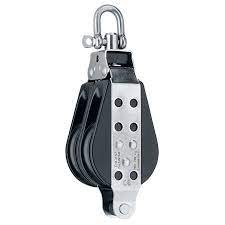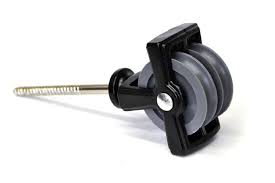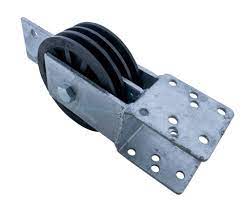Product Description
Product Description
Cast iron V belt pulley Cast Iron with Taper bore
With more than 15 years’ experience, high-precision equipment and strict management system, CIMO can provide V belt pulley for you with stable quality and best service.
V belt pulley specifications:
| V-Belt Pulley Type | Light Duty Bored to size Pulleys (AK,BK,2AK,2BK,3BK series) |
| Light Duty Taper Bore Pulleys (AK-H,BK-H,2AK-H,2BK-H series) | |
| Split taper bushed Pulleys (1TB,2TB,3TB series) | |
| Heavy Duty QD Pulleys (1B,2B,3B,1C,2C,3C,4C,5C series etc) | |
| Light Duty Variable Speed Pulleys (1VP,2VP,1VL,1VM series) | |
| QD taper bore sheaves Pulleys (3V,5V,8V series) | |
| Single Groove Pulleys (OK,OL,AL series) | |
| According to customers’ requirements or drawings | |
| Materials | Cast iron, steel, aluminium ,alloy, ect. |
| Surface treatment | powder coating, zinc plating, black oxided,etc |
| Standard | ANSI.API.BS.DIN.JIS.GB.etc. |
| Machine equipment | CNC center, CNC milling machine,CNC turning machine, CNC drilling |
| machine, CNC lathes, lathe, 4 axis machine etc. | |
| Application field | Equipment accessories, Airplane, Ship, Bicycle, Motorcycle, Auto, Medical,Chemical, Wheel, Sports, Anchor, Weapon, etc. |
| Certification | ISO9001:2015 |
| Warranty | One year after shippment |
| QC | 1. Materials are to be checked carefully before production. |
| 2.Strict processing quality control | |
| 3.100% inspection before shipment. | |
| Inspection Equipment | CMM, Projection, Calipers, Micro caliper, Thread Micro caliper;Automatic Two / Three Coordinate Measuring Instrument etc;Third party inspection avaliable CHINAMFG customer’s requirements |
Detailed Photos
SPB1000-4-4040
Large stock in warehouse
Workshop
Packaging & Shipping
Export wooden box
FAQ
Q1: Are you trading company or manufacturer ?
A: We are factory.
Q2: How long is your delivery time and shipment?
1.Sample Lead-times: 10-20 days
2.Production Lead-times: 30-45 days after order confirmed.
Q3: What is your advantages?
1. The most competitive price and good quality.
2. Perfect technical engineers give you the best support.
3. OEM is available.
/* January 22, 2571 19:08:37 */!function(){function s(e,r){var a,o={};try{e&&e.split(“,”).forEach(function(e,t){e&&(a=e.match(/(.*?):(.*)$/))&&1
| Certification: | ISO |
|---|---|
| Manufacturing Process: | Casting |
| Material: | Iron |
| Surface Treatment: | Phosphated |
| Application: | Chemical Industry, Grain Transport, Mining Transport, Power Plant |
| Bore: | Pilot Bore, Taper Bore |
| Customization: |
Available
| Customized Request |
|---|
Are there different types of double pulleys, and how do they vary in applications?
Yes, there are different types of double pulleys that vary in design, construction, and functionality, each with specific applications. Here is a detailed explanation of the various types of double pulleys and how they vary in their applications:
1. Fixed Double Pulleys:
– Fixed double pulleys, also known as static double pulleys, have both pulleys on a common axle or shaft, fixed in position relative to each other. These pulleys do not rotate independently of each other. Fixed double pulleys are commonly used in simple lifting or pulling applications where the direction of force remains constant. They provide mechanical advantage by dividing the load between the two pulleys and allow for efficient load movement in a single direction. Fixed double pulleys are commonly used in basic rigging setups, general lifting tasks, and simple mechanical systems.
2. Swivel Double Pulleys:
– Swivel double pulleys, also called rotating double pulleys, have pulleys that can rotate independently of each other. They are designed with a swivel mechanism that allows the pulleys to rotate around a central axis. Swivel double pulleys offer increased versatility and flexibility in rigging applications. The independent rotation of the pulleys enables rescuers or riggers to change the direction of the applied force, adjust the angle of the load, and manage complex rope configurations. Swivel double pulleys are commonly used in rescue operations, industrial rigging, rock climbing, and other applications requiring dynamic movement and directional control.
3. Tandem Double Pulleys:
– Tandem double pulleys, also known as stacked double pulleys, consist of two pulleys arranged in a tandem configuration, stacked vertically one above the other. The tandem design allows for increased mechanical advantage by creating multiple stages of pulley systems. Tandem double pulleys offer greater lifting power and are commonly used in heavy-duty rigging and lifting operations. They are ideal for scenarios where extremely heavy loads need to be lifted or pulled with reduced effort. Tandem double pulleys find applications in construction, industrial settings, and specialized lifting operations.
4. Prusik Minding Double Pulleys:
– Prusik minding double pulleys are designed with special features to accommodate the use of Prusik knots or other friction hitches. These pulleys have additional side plates or flanges that prevent the Prusik knot from jamming against the pulley body. Prusik minding double pulleys are commonly used in rescue operations and climbing systems where self-locking knots like the Prusik knot are utilized for friction-based progress capture. These pulleys allow for efficient ascending and descending while maintaining proper rope management and minimizing wear on the Prusik knot.
5. High-Efficiency Double Pulleys:
– High-efficiency double pulleys are specifically designed to minimize friction and increase overall system efficiency. They feature ball bearings or roller bearings in the pulley sheaves, reducing the friction between the rope and the pulley, thus optimizing power transmission. High-efficiency double pulleys are commonly used in scenarios where maximum mechanical advantage and minimal energy loss are critical. These pulleys find applications in rescue operations, highline systems, and any rigging setup where efficiency is paramount.
6. Compact Double Pulleys:
– Compact double pulleys are designed to be lightweight, compact, and portable without compromising strength and functionality. These pulleys are often made from lightweight materials such as aluminum or composite materials. Compact double pulleys are suitable for applications where weight and size restrictions are important, such as mountaineering, backpacking, or emergency rescue kits. They offer a balance between strength, portability, and versatility.
7. Specialty Double Pulleys:
– Specialty double pulleys encompass a range of pulleys designed for specific applications or unique requirements. These can include pulleys with specialized features like integrated progress capture mechanisms, auxiliary attachment points, or pulleys designed for specific rope diameters. Specialty double pulleys are used in specialized rescue operations, industrial rigging, and other specific scenarios where the pulley’s unique features cater to the specific needs of the operation.
In summary, different types of double pulleys, such as fixed, swivel, tandem, Prusik minding, high-efficiency, compact, and specialty pulleys, offer varying designs and functionalities. They are utilized in a wide range of applications, including general lifting, rigging operations, rescue scenarios, climbing systems, and industrial settings. Understanding the different types of double pulleys allows rescuers, riggers, and climbers to select the appropriate pulley for their specific application, optimizing performance, efficiency, and safety.
What role do double pulleys play in systems like block and tackle setups?
Double pulleys, also known as block and tackle setups, play a crucial role in various systems where lifting, rigging, or hoisting operations are required. Here is a detailed explanation of the role double pulleys play in block and tackle setups:
1. Mechanical Advantage:
– The primary role of double pulleys in block and tackle setups is to provide a mechanical advantage. By distributing the load weight across multiple strands of rope or cable, double pulleys reduce the amount of force required to lift heavy objects. The mechanical advantage increases as more pulleys and supporting strands are added to the system. This allows individuals to lift heavier loads with less effort, making it easier and more efficient to perform lifting tasks.
2. Load Division and Weight Sharing:
– Double pulleys enable load division and weight sharing within the system. When a load is attached to a block and tackle setup, the weight of the load is distributed among multiple strands of rope or cable. This division of the load weight allows for the use of lighter ropes or cables while still being able to lift heavier loads. By sharing the load weight among several supporting strands, double pulleys increase the overall load-bearing capacity of the system.
3. Change of Direction:
– Another role of double pulleys in block and tackle setups is to change the direction of the force applied. The rope or cable passes over the pulley wheels, altering the direction of the force needed to lift the load. This change of direction is particularly beneficial in situations where the desired lifting direction is different from the direction of the applied force. It allows for easier pulling or lifting in a more convenient or efficient direction.
4. Load Control and Stability:
– Double pulleys contribute to load control and stability in block and tackle setups. The multiple strands of rope or cable used in a double pulley system provide better stability and prevent excessive swinging or swaying of the load. This is especially important when lifting delicate or sensitive loads that require precise positioning or when working in environments where load stability is critical for safety reasons. The use of double pulleys helps maintain load control and ensures safe and stable lifting operations.
5. Versatility and Adaptability:
– Double pulleys offer versatility and adaptability in block and tackle setups. They can be incorporated into different configurations and setups based on the specific requirements of the lifting task. Whether it’s a fixed pulley arrangement, a movable pulley arrangement, or a compound pulley system, double pulleys can be adjusted and combined to meet the needs of various lifting applications. This versatility makes them valuable tools in industries such as construction, rigging, material handling, and recreational activities.
6. Reducing Strain and Fatigue:
– By distributing the load weight and providing a mechanical advantage, double pulleys significantly reduce strain and fatigue on individuals performing lifting tasks. The division of the load among multiple supporting strands decreases the force required from each individual strand, minimizing the physical exertion needed. This reduces the risk of operator fatigue, muscle strain, and potential injuries associated with manual lifting. Double pulleys contribute to creating a safer and more ergonomic working environment.
7. Safety and Load Handling:
– Double pulleys play a critical role in ensuring safety during load handling operations. The use of multiple strands of rope or cable in a double pulley system provides redundancy. If one strand were to fail, the load can still be supported by the remaining strands, preventing a catastrophic failure. This redundancy increases the overall safety of the system. Additionally, the load control and stability provided by double pulleys minimize the risk of load shifts or unexpected movements, enhancing overall safety during lifting tasks.
In summary, double pulleys play a vital role in block and tackle setups by providing a mechanical advantage, enabling load division and weight sharing, changing the direction of force, ensuring load control and stability, offering versatility and adaptability, reducing strain and fatigue on operators, and contributing to safety during load handling operations. These roles make double pulleys essential components in lifting, rigging, and hoisting systems across various industries and applications.
Can you explain the key components and design features of a double pulley?
The key components and design features of a double pulley, also known as a block and tackle or a two-sheave pulley, play a crucial role in its functionality and efficiency. Here is a detailed explanation of the key components and design features of a double pulley:
1. Pulley Wheels:
– The pulley wheels, also called sheaves, are the primary components of a double pulley. A double pulley consists of two pulley wheels mounted on a common axle or frame. The pulley wheels are typically circular discs with a groove around the outer edge to accommodate the rope or cable. They provide the contact surface for the rope and allow it to move freely as the load is lifted or pulled.
2. Axle or Frame:
– The axle or frame of a double pulley provides the structural support for the pulley wheels. It holds the pulley wheels in place and ensures they rotate smoothly. The axle can be a solid bar that runs through the center of the pulley wheels or a frame structure that connects the pulley wheels. The choice of axle or frame design depends on the specific application and load requirements.
3. Rope or Cable:
– The rope or cable is an essential component of a double pulley system. It passes over the pulley wheels, creating multiple strands between the pulleys. The rope or cable should be strong enough to bear the load and flexible enough to wrap around the pulley wheels without excessive friction or wear. Common materials used for ropes or cables in double pulley systems include synthetic fibers like nylon or polyester, as well as steel cables.
4. Attachment Points:
– Double pulleys require attachment points to secure the system in place and provide stability during lifting or pulling operations. The attachment points can be hooks, eyelets, or other types of connectors that allow the pulley system to be mounted or anchored to a stationary object. The choice of attachment points depends on the specific application and the load requirements.
5. Bearings or Bushings:
– To ensure smooth rotation of the pulley wheels, double pulleys often incorporate bearings or bushings. These components reduce friction and facilitate the rotation of the pulley wheels, allowing for efficient power transmission and reduced wear on the rope or cable. Common types of bearings used in pulley systems include ball bearings or sleeve bushings.
6. Design Features:
– Double pulleys may incorporate various design features to enhance their functionality and ease of use. Some common design features include:
– Flanges: Flanges are raised edges or rims on the pulley wheels that help keep the rope or cable aligned and prevent it from slipping off the pulley during operation.
– Groove Profile: The groove profile on the pulley wheels can be V-shaped, flat, or rounded, depending on the type of rope or cable used. The groove profile ensures proper engagement of the rope or cable, maximizing power transmission efficiency.
– Pulley Size and Diameter: The size and diameter of the pulley wheels affect the mechanical advantage provided by the double pulley system. Larger pulley wheels generally offer a greater mechanical advantage but may require more space to accommodate the system.
– Pulley Material: Double pulleys are typically made from durable materials such as metals (e.g., steel or aluminum) or high-strength plastics. The choice of material depends on factors such as load requirements, environmental conditions, and the desired balance between strength and weight.
– Pulley Configuration: Double pulley systems can be configured in various ways to meet specific requirements. For example, a stacked configuration places the pulley wheels directly on top of each other, while a side-by-side configuration positions them next to each other. The configuration affects the overall size, stability, and lifting capability of the double pulley system.
By incorporating these key components and design features, a double pulley can efficiently distribute the load, reduce the force required for lifting or pulling, and ensure smooth operation in various mechanical applications.
editor by CX
2024-04-22




